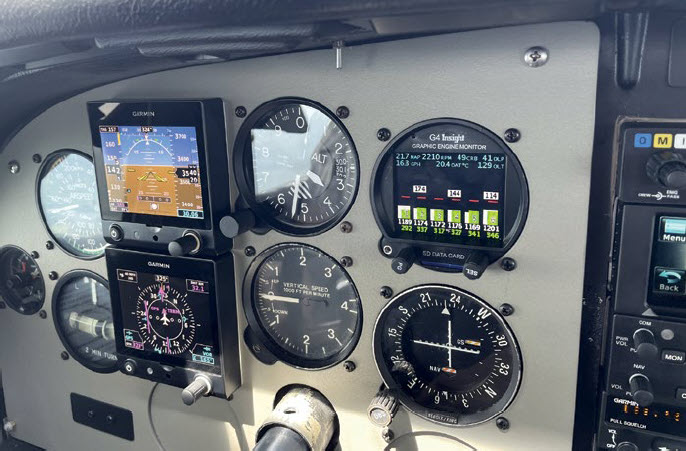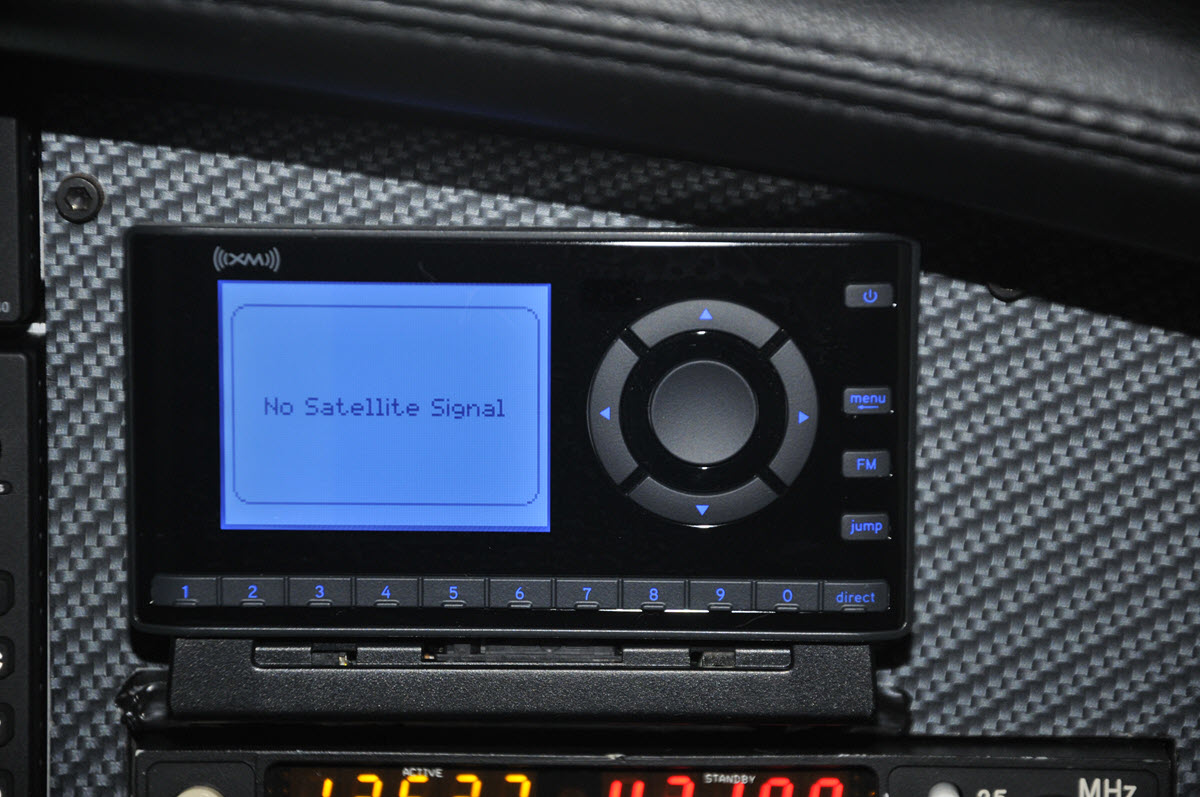Q
I recently installed a Garmin GAD 13 in my setup (see note below). While flying this summer, I had a huge discrepancy between the outside air temperature (OAT) reading on three devices: The stock analog probe in the air vent, the installed probe on my Insight G4, and the display on the G5. All three are different, and the GAD was off by as much as 10 degrees C.
I contacted the installer and had them move the probe back, further away from the exhaust and closer to the tail section, probably directly below the ELT, behind the bulkhead. Took it flying again this week; it was still reading 9 degrees C warmer than the other two. I think I may head back to the avionics installer and have them check the probe for proper operation. I also seem to have a G5 with the battery-drain issue. My AI seems like it will not charge fully or perhaps not hold a charge.
— BruceCFVVU
Note: Here is the description of a Garmin GAD 13: “This OAT probe interface is FAA-PMA approved and can be added to the CAN bus for an existing single or dual G5 installation and enable the display of Outside Air Temperature (OAT), True Airspeed (TAS), and Winds Aloft.”
A
I’ve had the same problem between the probe on my Aspen PFD and my JPI EDM-830 engine display. I kept the display turned on with my Aspen and turned off the display on the engine monitor. The Aspen has the lowest temp and that’s what I was concerned about (ice).
— Scott Sherer, COO Aviation Director
A
I had the same problem on my 182F. The G5 was reading 5 to 10 degrees hotter than the engine monitor and vent thermometer (which were both reading the same). The installer had placed the probe on the belly behind the exhaust! Anyway, he moved it under the elevator, and all is well now.
— FCAJR8630
A
There is no way you will get accurate readings on the belly behind the exhaust. Under the wing or on the side of the plane under the elevator (preferably right side) is best.
— jessesaint
A
I also have three probes for my T182T. The OEM probe is on the roof, the EDM-800 probe is under the left wing about 12 inches from the wing root, and the GAD 13 probe is mounted under the right wing on an inspection plate, also about 12 inches from the root. All three are within 2 degrees C.
You are describing a possible loose or bad ground connection. That would give both the battery issue you are seeing and the temp difference. The G5s and GAD 13 should have a common ground point per the install manual.
Just to make sure the GAD 13, or the other probes, are reading correctly, you could have them compared with a calibrated meter over a range of temperatures. Maybe easier said than done.
— Larry
A
I also have three probes on my 182H. The EDM830 probe is in the wing root panel, pilot side. The probe for the AV-20 is in the inspection panel outboard of the pitot tube. I also have a Dynon D100 and mounted the temp probe on the bottom of the horizontal stabilizer, as the remote magnetometer is mounted in the fuselage behind the extended baggage, and the probe plugs into it, so it was convenient. All three read between 2 to 3 degrees of each other. I did have one in the belly below the baggage, as there were holes there from the ADF antenna if I recall correctly, but it read higher, as was previously mentioned.
— Hman442
A
One method to calibrate a sensor at the freezing point of 0 degrees C is to create an ice/water mixture and immerse the probe in it. I recall one sensor that has a manufacturer guaranteed accuracy of about 1% at 273 degrees Kelvin, which is consistent with the observations of Hman442. Its output is in a current loop of 1 micro amp per degree K. It is used for a Garmin GPS navigator. Generally, temperature sensors will produce erroneous readings when exposed to direct sunlight or mounted near or in contact with heated surfaces or materials while the plane is not moving. This would be true when the sensor is facing hot or freezing tarmac. Once airborne, the relative wind should cool down the sensor to air temperature and temperature readings should be closer to each other if the systems are properly calibrated.
— nancyhewett
A
Seems to me that any OAT probe located under the belly of the airplane will be biased hot. I think that some portion of the warm air flow that just cooled the engine will remain attached to the belly, at least to the point where the tail starts to go up. A simple analysis suggests that the average Cessna at cruise has engine-cooling air leave the cowling about 100 degrees F warmer than it entered. I’d be happier with an OAT probe on the side or top of the cabin, or out on the wing.
—HessAero
A
The probe on the belly is in the slipstream of the exhaust and cooling air; it needs to be moved. An underwing inspection plate would be easiest. The analog OAT can be removed and calibrated in a cup of ice water (should be adjusted to read 0 degrees C). Then put the airplane in a controlled environment like a hangar and let the temps stabilize, then compare the three readings. If they all agree, any differences in flight are due to location.
Check installation manuals to determine if any of the digital temps can be trimmed.
— Erich Rempert, A&P/IA Consultant






